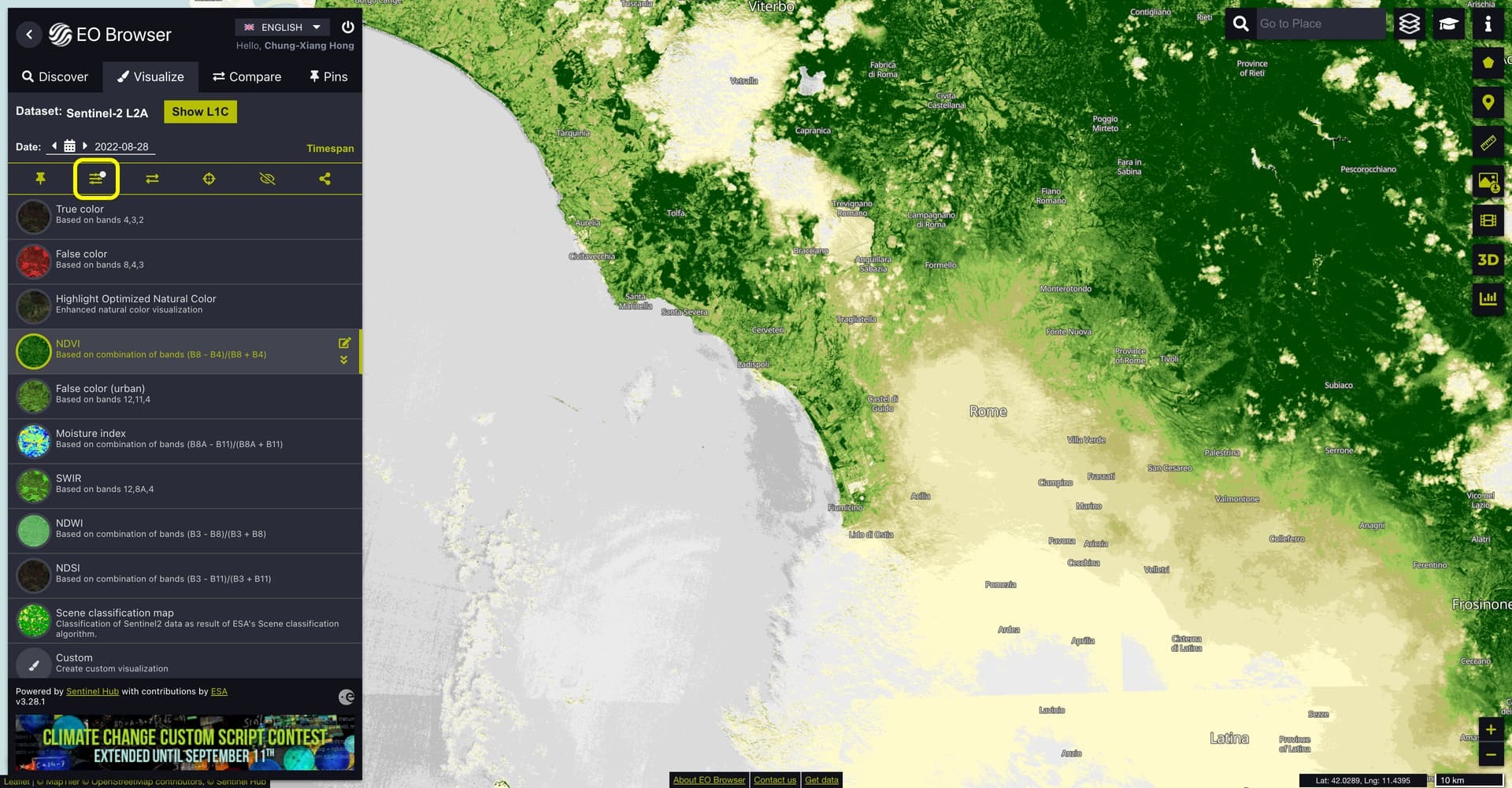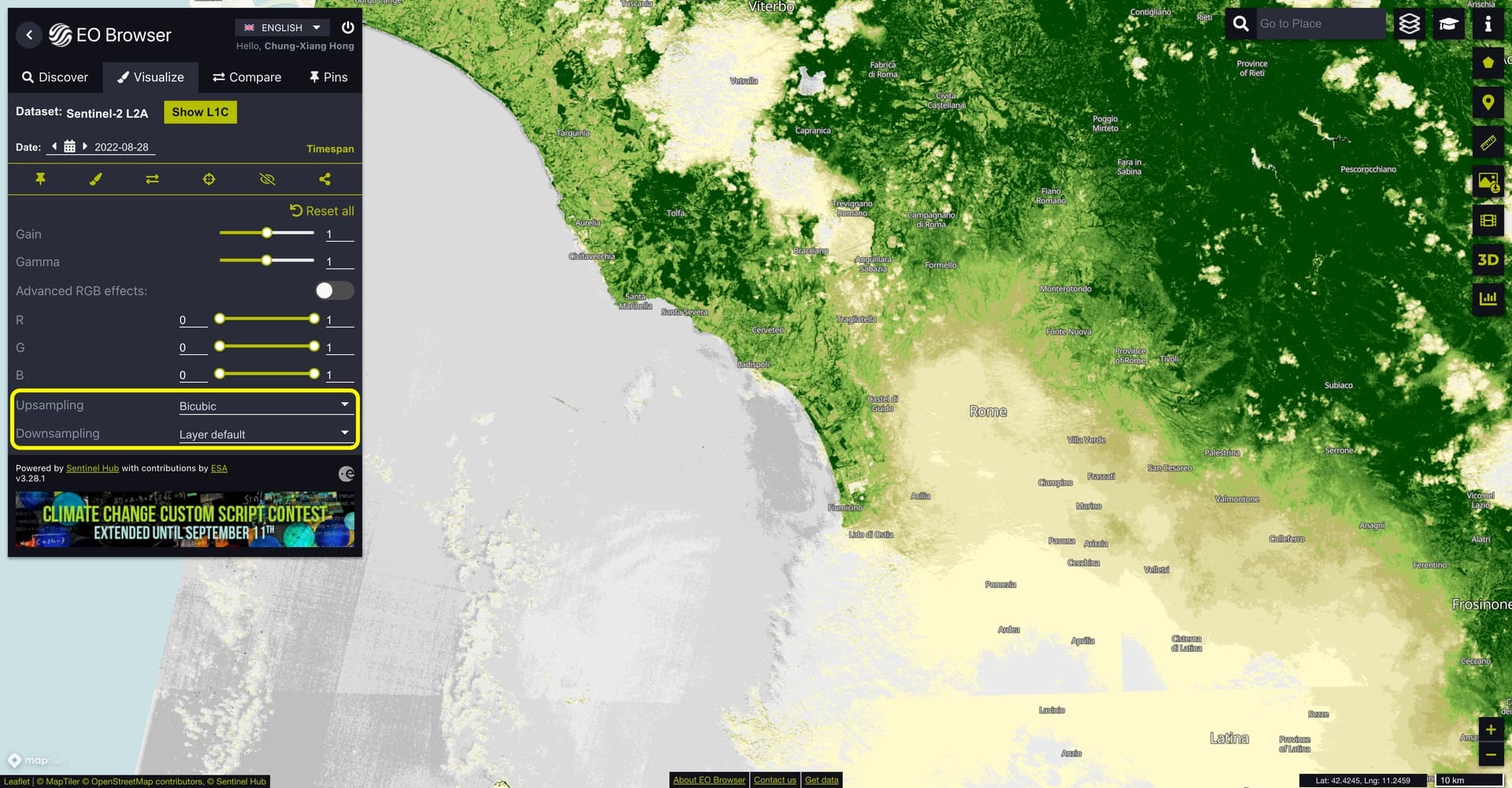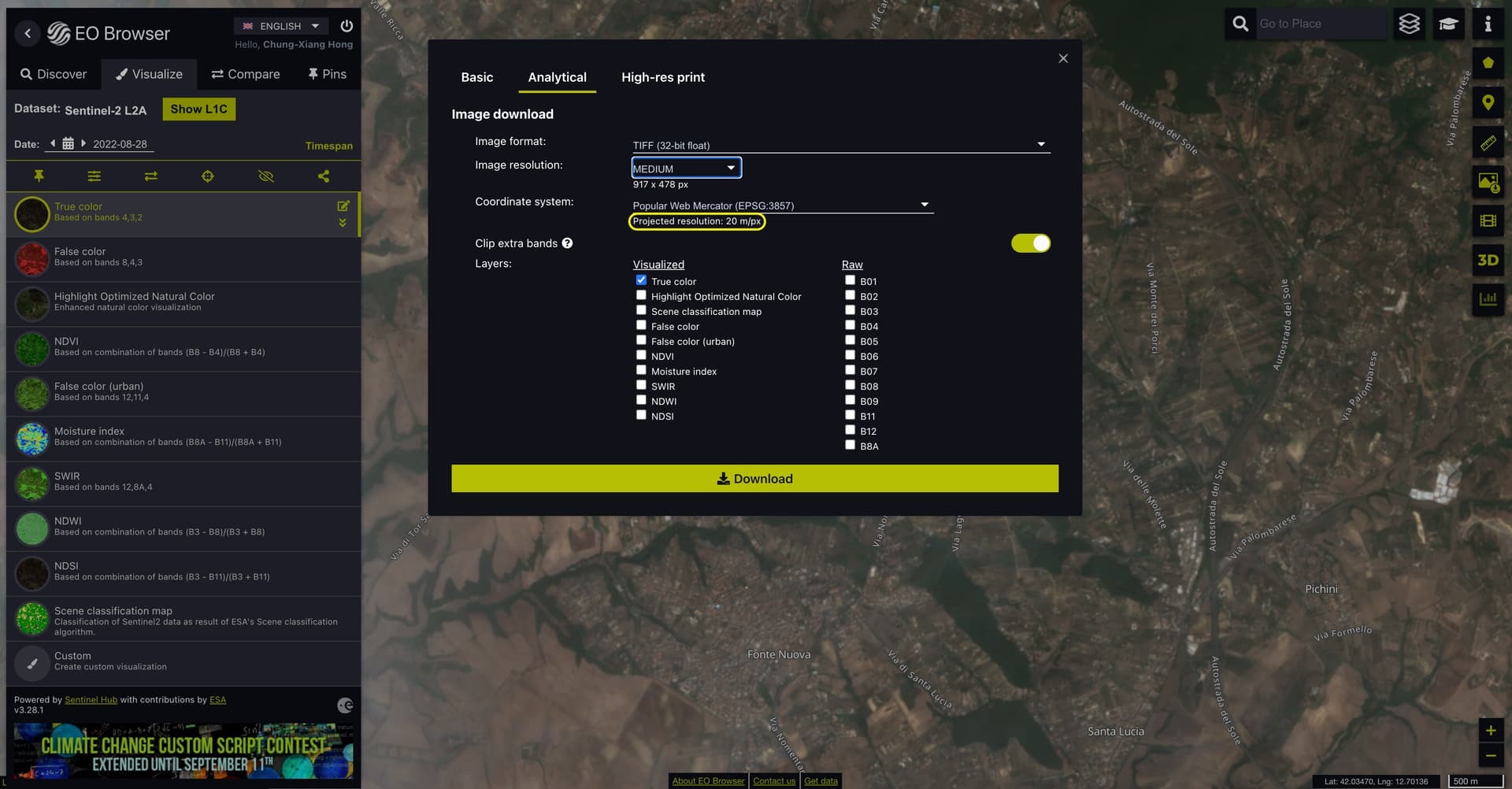Hello everyone,
I would like to have more info about:
- Sentinel-2 L2A bands resampling for the Normalised Difference Index (e.g., NDSI, NDVI) calculation within EO Browser.
- Resampling method used when a .TIFF is downloaded using the “Analytical” download in EO Browser.
Thank you for your help.




